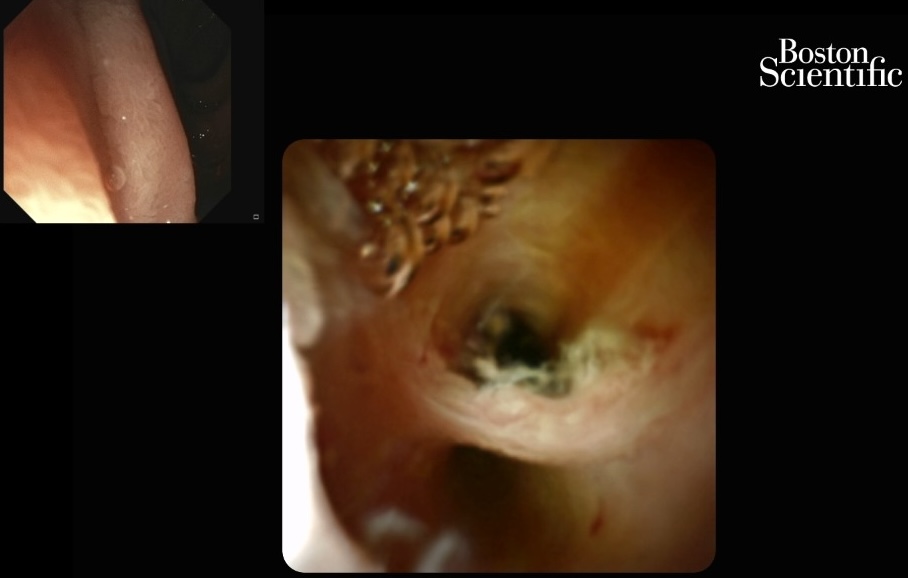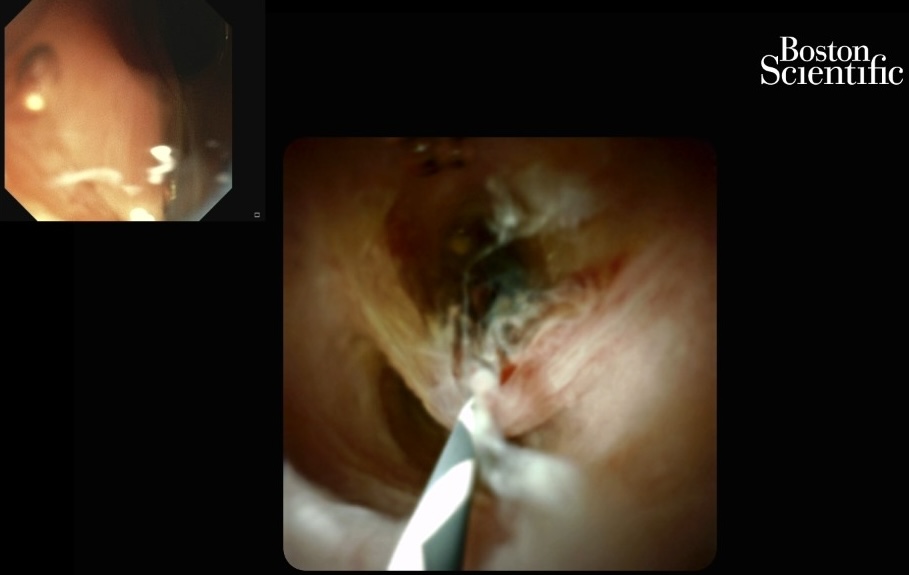Monday Poster Session
Category: Biliary/Pancreas
P2367 - Anatomical Variant of the Cystic Duct Arising From the Ampulla
Monday, October 27, 2025
10:30 AM - 4:00 PM PDT
Location: Exhibit Hall
- MI
Mohamed Ismail, DO
Rutgers New Jersey Medical School
Astoria, NY
Presenting Author(s)
Menna-Allah Elaskandrany, DO1, Mohamed Ismail, DO2, Gokturk Suut, MD3, Weizheng Wang, MD2
1Lenox Hill Hospital, Northwell Health, New York, NY; 2Rutgers New Jersey Medical School, Newark, NJ; 3Rutgers New Jersey Medical School, Montville Township, NJ
Introduction: Variations in biliary anatomy, detected most commonly as incidental findings, are well documented in the literature, with multiple references to anatomic variations in the insertion of the cystic duct into the common hepatic duct, either directly above or within the pancreas. These anomalies may lead to clinical symptoms due to biliary obstruction or dysfunction. This case describes a rare variant in which the cystic duct, rather than joining the common hepatic duct proximally, directly connects to the ampulla, creating compression on the CBD, mimicking features of sphincter of Oddi dysfunction (SOD). This variant is significant, as it has never been described in the literature previously. Nonetheless, it can lead to recurrent biliary colic, post-cholecystectomy syndrome, and difficulties in biliary interventions.
Case Description/
Methods: A 30-year-old male with past medical history of substance use disorder and asthma presented to the gastroenterology clinic for evaluation of persistent abdominal pain. The patient had undergone cholecystectomy in July 2021 and reported ongoing nausea, vomiting, and epigastric pain since the surgery. A HIDA scan with cholecystokinin (CCK) stimulation revealed a positive score of 7, suggesting SOD. An abdominal CT scan raised concerns for a possible micro-esophageal perforation, but the patient was asymptomatic. Due to persistent symptoms, the patient underwent ERCP, which revealed a rare anatomical variant of the biliary system. Contrast injection demonstrated the presence of three ducts- the CBD, pancreatic duct, and cystic duct- all draining directly into the ampulla. A balloon occlusion technique confirmed that the cystic duct was inserting directly into the ampulla and compressing the CBD, leading to biliary outflow obstruction. A biliary sphincterotomy was performed, and two plastic biliary stents were placed to alleviate obstruction. The patient tolerated the procedure well and had significant symptom relief post-ERCP.
Discussion: This case highlights a rare biliary anatomical variation where the cystic duct inserted directly into the ampulla, leading to CBD compression and recurrent biliary symptoms. Recognition of such anomalies is critical for proper diagnosis and management, particularly in post-cholecystectomy patients with persistent pain. ERCP remains a valuable tool in both diagnosis and intervention for these rare anatomical findings.

Figure: Image obtained during ERCP depicting two orifices in the ampulla. The wire is seen passing through the CBD, while the other orifice is the opening of the cystic duct.

Figure: Another image also obtained during ERCP depicting both the CBD and the cystic duct arising from the ampulla.
Disclosures:
Menna-Allah Elaskandrany indicated no relevant financial relationships.
Mohamed Ismail indicated no relevant financial relationships.
Gokturk Suut indicated no relevant financial relationships.
Weizheng Wang indicated no relevant financial relationships.
Menna-Allah Elaskandrany, DO1, Mohamed Ismail, DO2, Gokturk Suut, MD3, Weizheng Wang, MD2. P2367 - Anatomical Variant of the Cystic Duct Arising From the Ampulla, ACG 2025 Annual Scientific Meeting Abstracts. Phoenix, AZ: American College of Gastroenterology.
1Lenox Hill Hospital, Northwell Health, New York, NY; 2Rutgers New Jersey Medical School, Newark, NJ; 3Rutgers New Jersey Medical School, Montville Township, NJ
Introduction: Variations in biliary anatomy, detected most commonly as incidental findings, are well documented in the literature, with multiple references to anatomic variations in the insertion of the cystic duct into the common hepatic duct, either directly above or within the pancreas. These anomalies may lead to clinical symptoms due to biliary obstruction or dysfunction. This case describes a rare variant in which the cystic duct, rather than joining the common hepatic duct proximally, directly connects to the ampulla, creating compression on the CBD, mimicking features of sphincter of Oddi dysfunction (SOD). This variant is significant, as it has never been described in the literature previously. Nonetheless, it can lead to recurrent biliary colic, post-cholecystectomy syndrome, and difficulties in biliary interventions.
Case Description/
Methods: A 30-year-old male with past medical history of substance use disorder and asthma presented to the gastroenterology clinic for evaluation of persistent abdominal pain. The patient had undergone cholecystectomy in July 2021 and reported ongoing nausea, vomiting, and epigastric pain since the surgery. A HIDA scan with cholecystokinin (CCK) stimulation revealed a positive score of 7, suggesting SOD. An abdominal CT scan raised concerns for a possible micro-esophageal perforation, but the patient was asymptomatic. Due to persistent symptoms, the patient underwent ERCP, which revealed a rare anatomical variant of the biliary system. Contrast injection demonstrated the presence of three ducts- the CBD, pancreatic duct, and cystic duct- all draining directly into the ampulla. A balloon occlusion technique confirmed that the cystic duct was inserting directly into the ampulla and compressing the CBD, leading to biliary outflow obstruction. A biliary sphincterotomy was performed, and two plastic biliary stents were placed to alleviate obstruction. The patient tolerated the procedure well and had significant symptom relief post-ERCP.
Discussion: This case highlights a rare biliary anatomical variation where the cystic duct inserted directly into the ampulla, leading to CBD compression and recurrent biliary symptoms. Recognition of such anomalies is critical for proper diagnosis and management, particularly in post-cholecystectomy patients with persistent pain. ERCP remains a valuable tool in both diagnosis and intervention for these rare anatomical findings.

Figure: Image obtained during ERCP depicting two orifices in the ampulla. The wire is seen passing through the CBD, while the other orifice is the opening of the cystic duct.

Figure: Another image also obtained during ERCP depicting both the CBD and the cystic duct arising from the ampulla.
Disclosures:
Menna-Allah Elaskandrany indicated no relevant financial relationships.
Mohamed Ismail indicated no relevant financial relationships.
Gokturk Suut indicated no relevant financial relationships.
Weizheng Wang indicated no relevant financial relationships.
Menna-Allah Elaskandrany, DO1, Mohamed Ismail, DO2, Gokturk Suut, MD3, Weizheng Wang, MD2. P2367 - Anatomical Variant of the Cystic Duct Arising From the Ampulla, ACG 2025 Annual Scientific Meeting Abstracts. Phoenix, AZ: American College of Gastroenterology.
